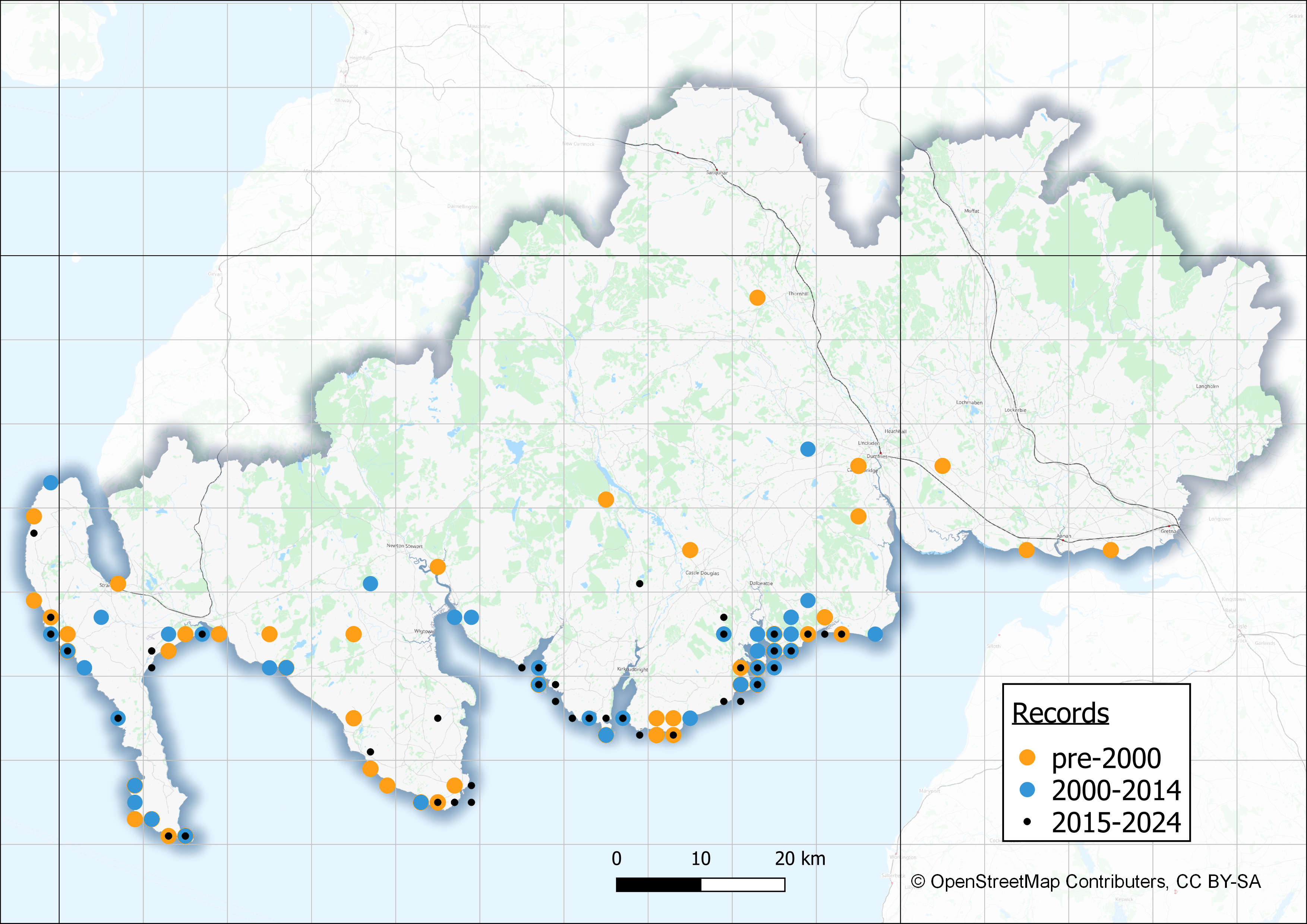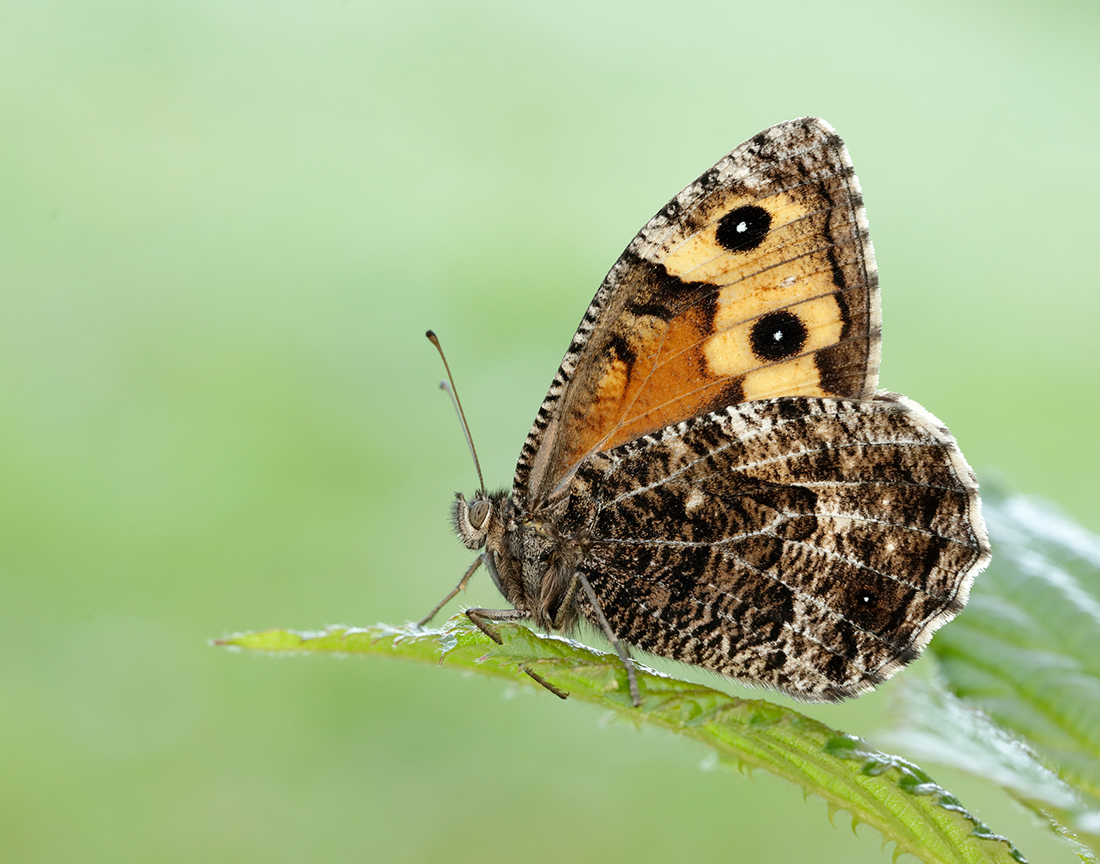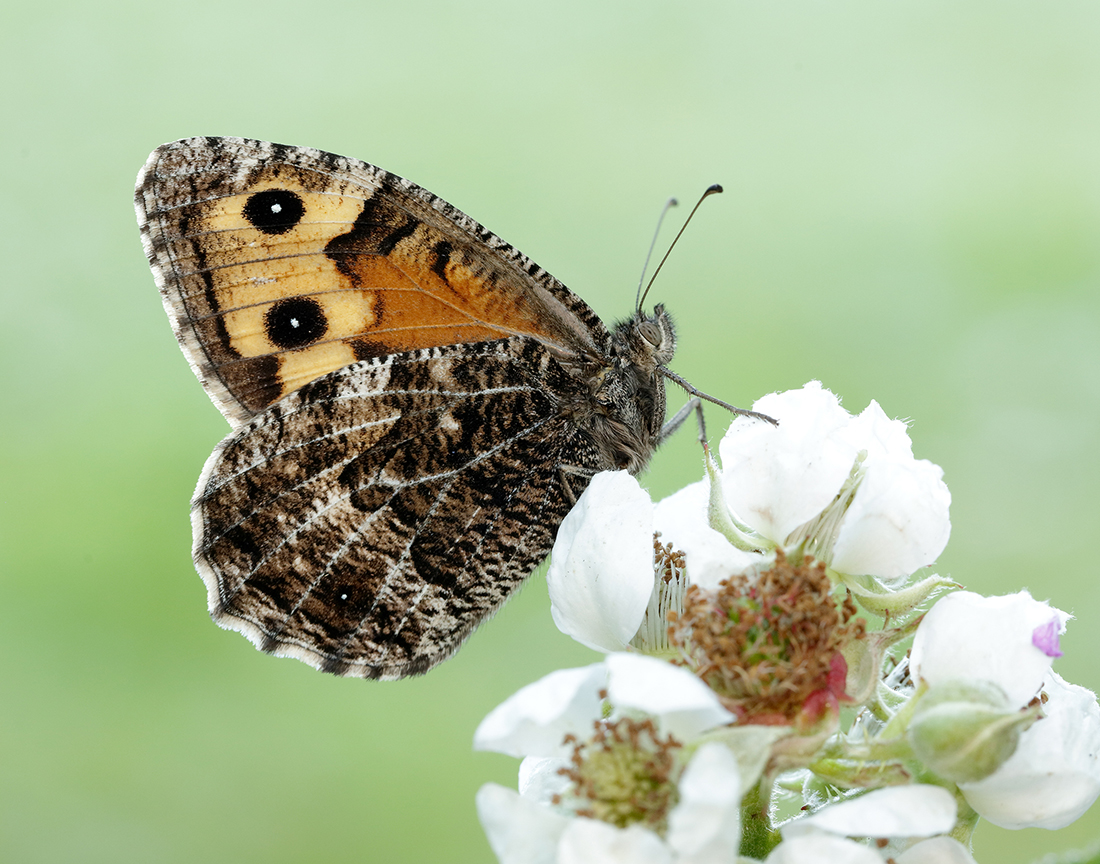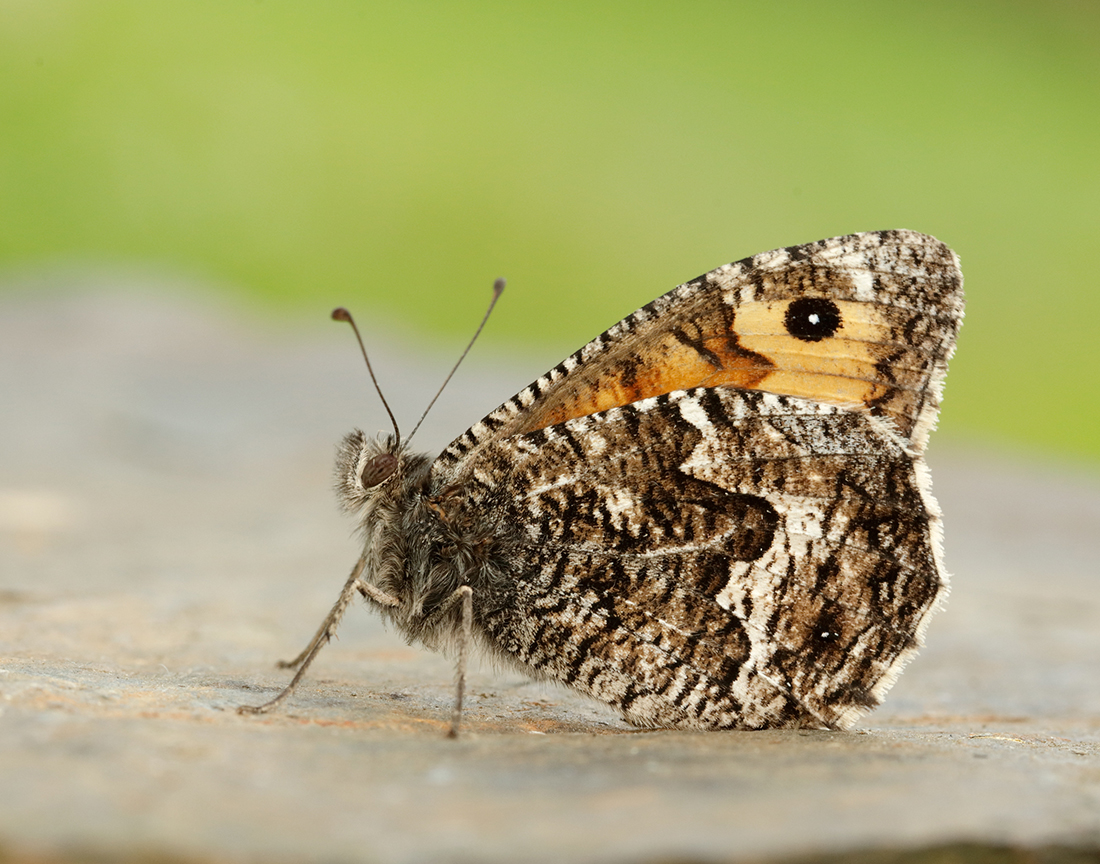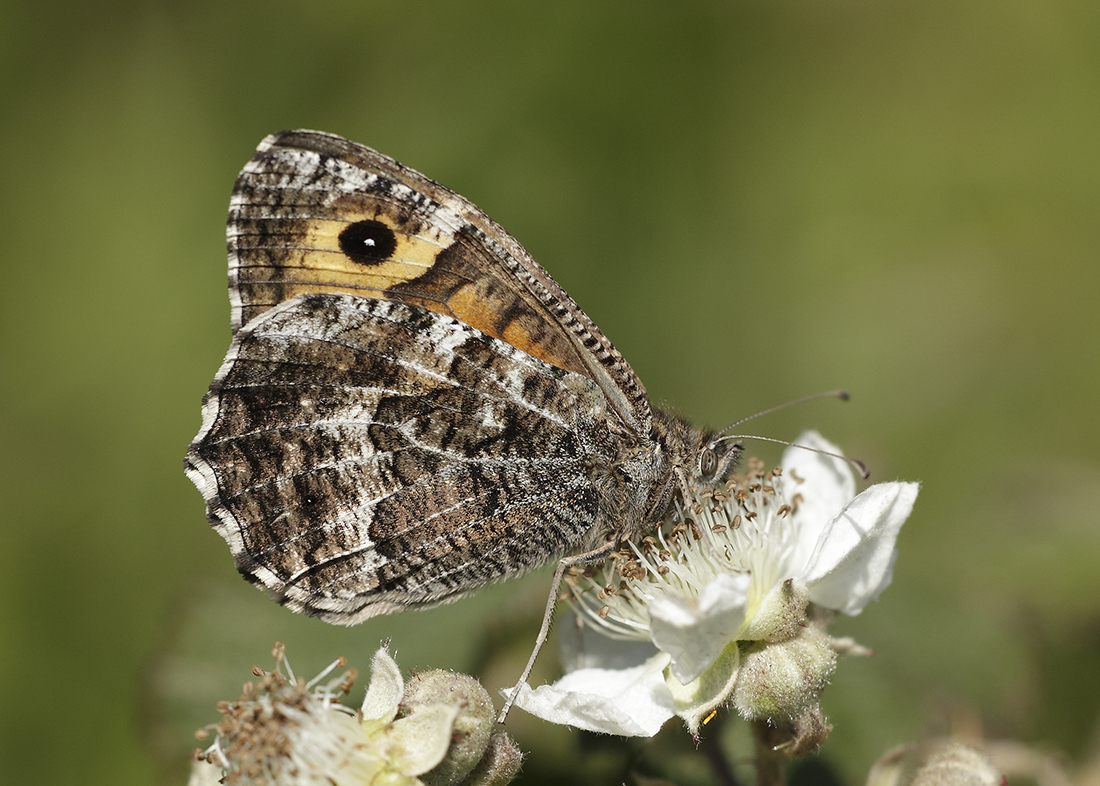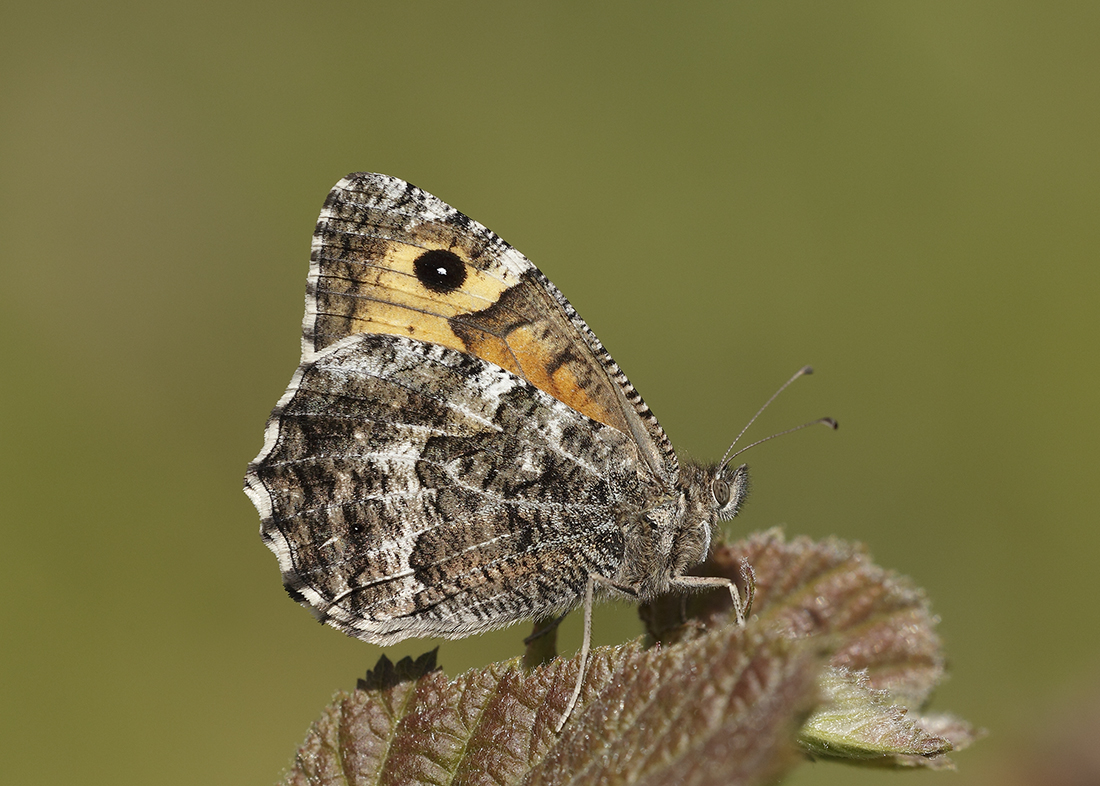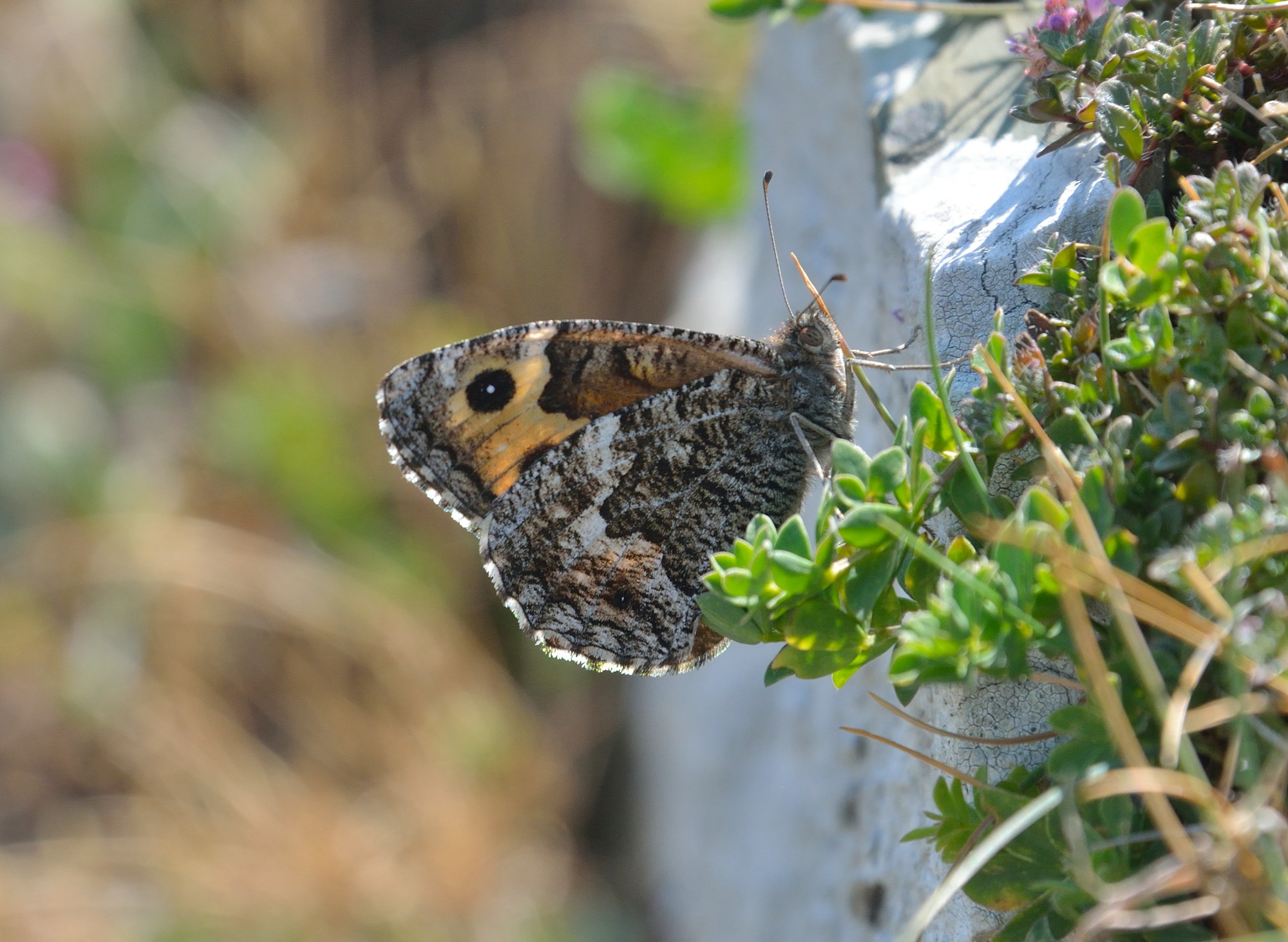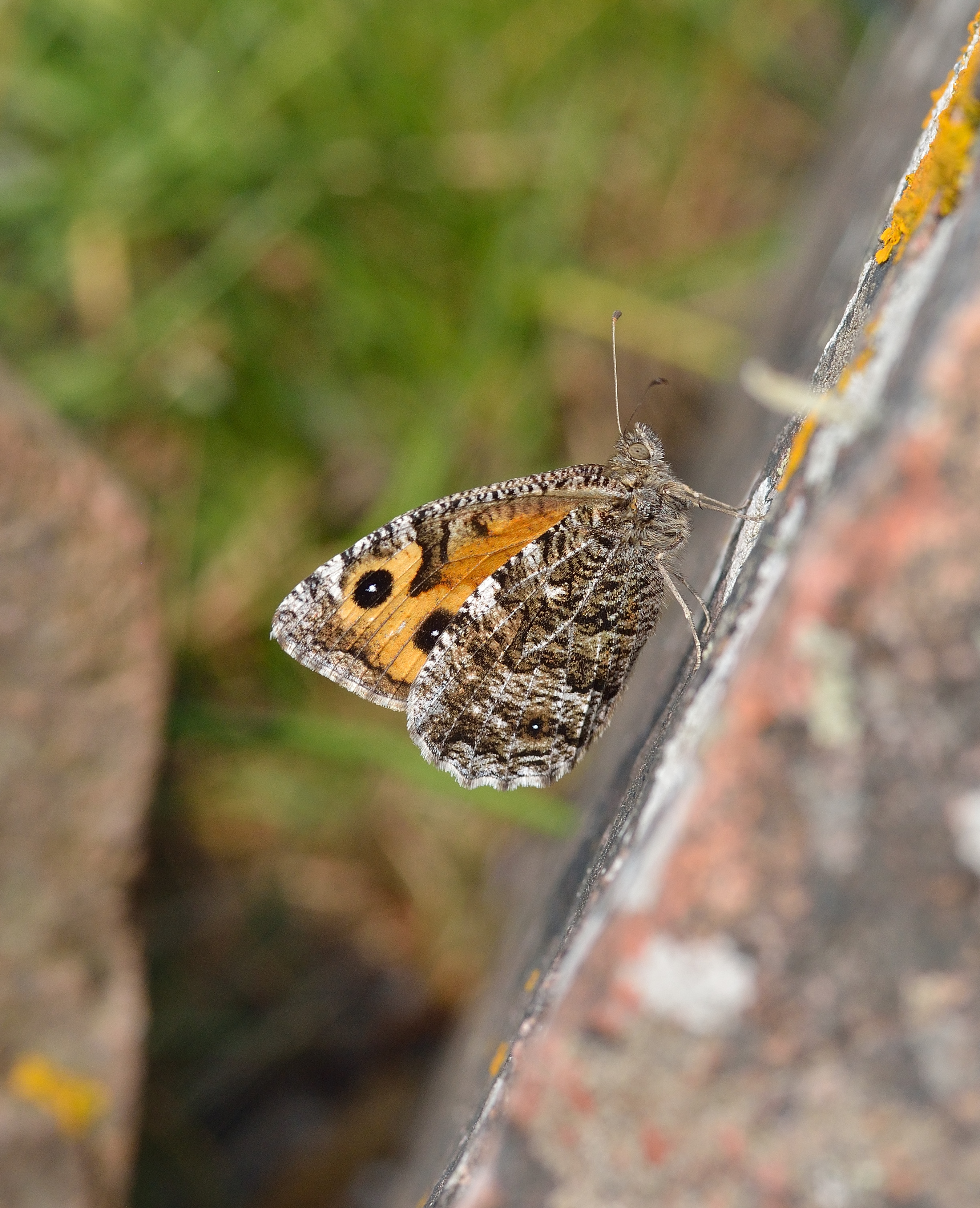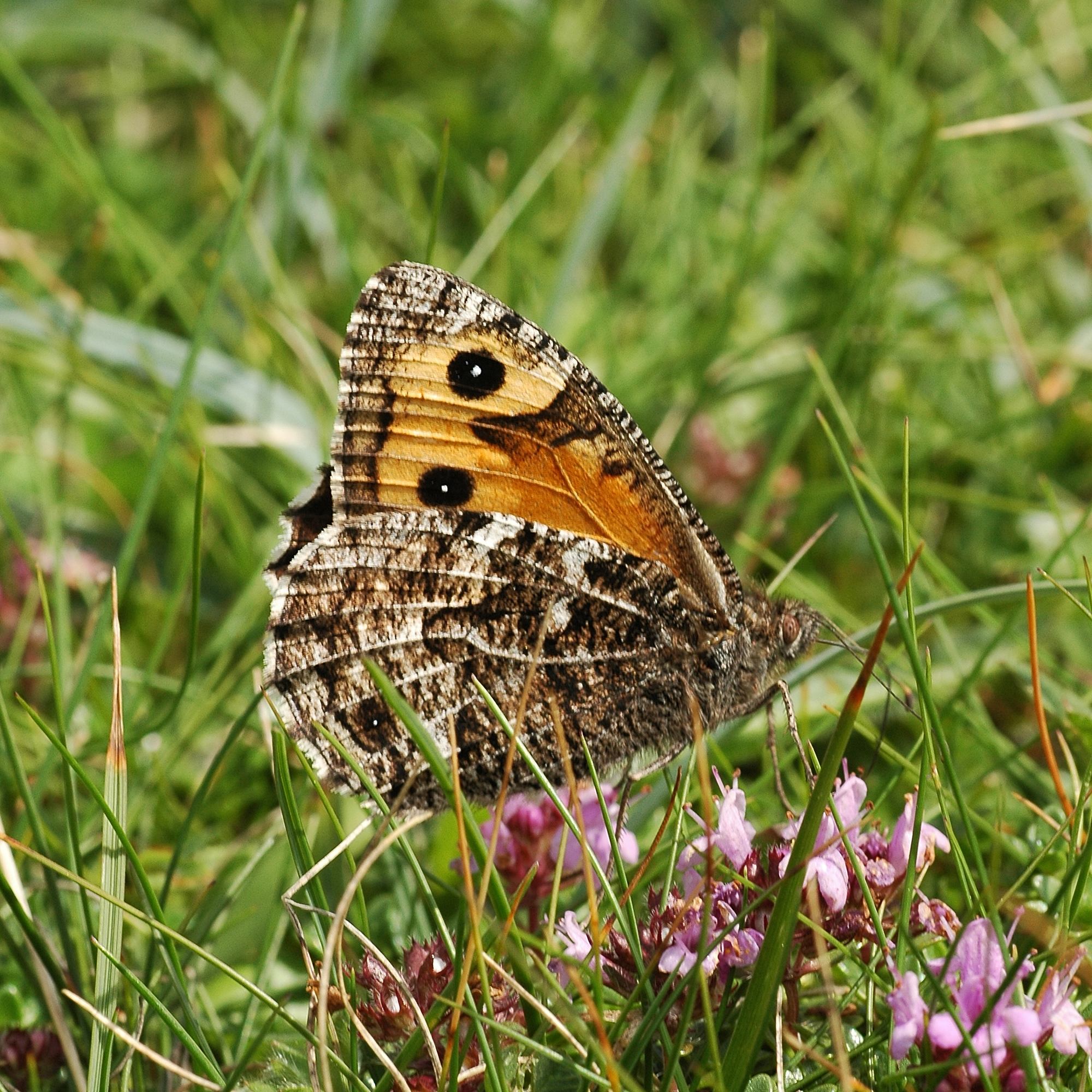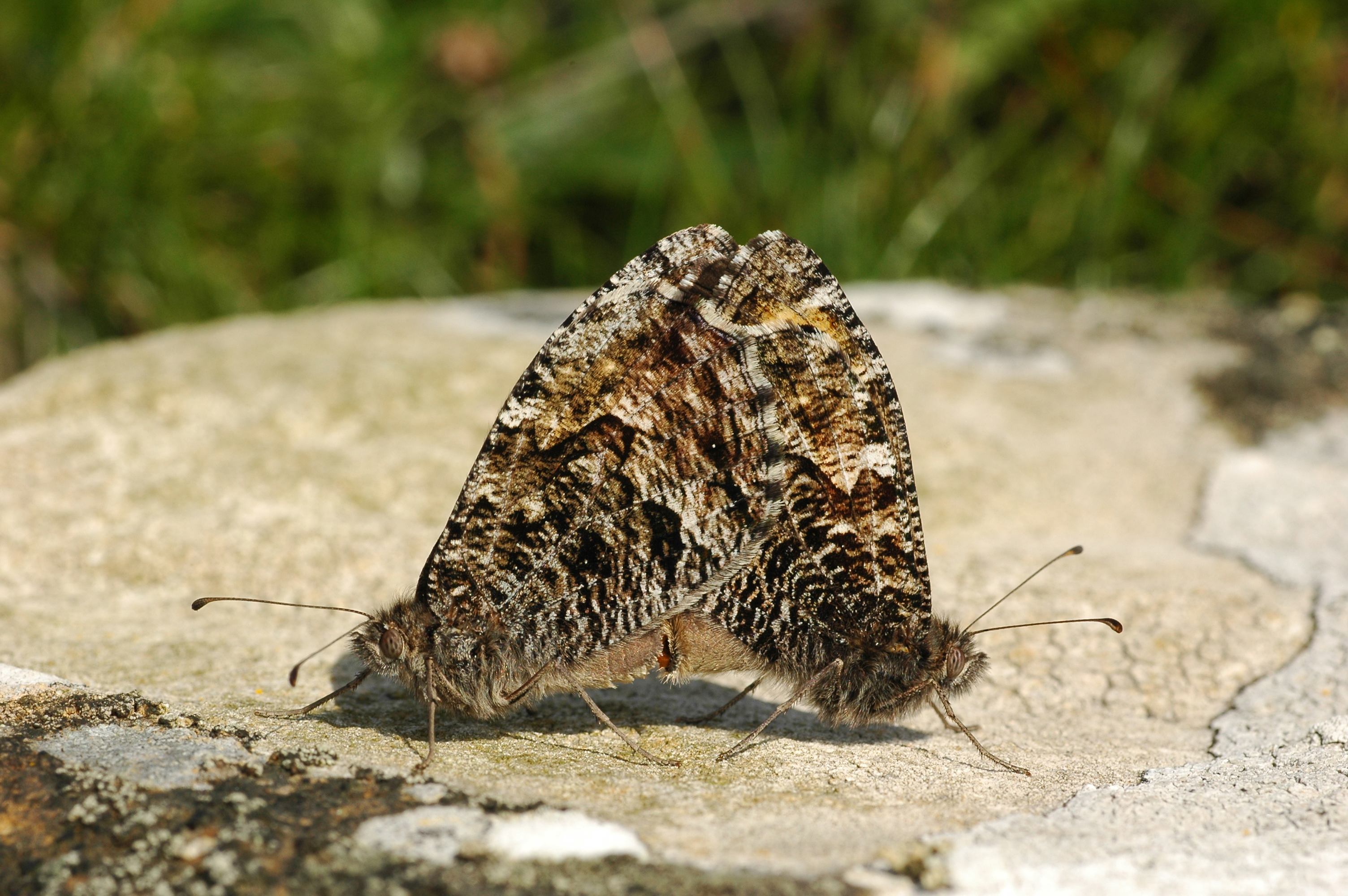This sun-loving butterfly can be found around most of the coast, although there is a lack of recent records from Dumfriesshire.
In Britain and several other north European countries the Grayling has been declining, even on the coast and on well-managed nature reserves. One suggestion is that the combination of warmer climate and excess nitrogen deposition is leading to more grass growth, changing the hot bare ground with fine-leaved grasses that the butterfly requires into dense swards of coarse grasses that are too cool for the butterfly.
The Grayling was once also found on inland sites such as quarries, disused railway lines and other ‘post-industrial’ sites. Presumably it colonised these sites from nearby natural grasslands which have since been converted into unsuitable agricultural grass leys and arable. Some of these inland sites are no longer occupied as they very prone to become covered in scrub.
Identification
Graylings can disappear from view as soon as they land, their firmly closed wings superbly matching a stony backdrop. They also tilt their bodies so their wings cast as little shadow as possible. The Grayling’s upper wings are rarely seen – sometimes when mating or if, unfortunately, seized by a spider. The Wall often occurs in the same habitats at the same time and could be mistaken for Grayling, but the former basks with its wings open unlike the latter.
If a resting Grayling is disturbed, a flick of the forewing will flash an eyespot. If further disturbed it often only flies a short distance before settling again. Sometimes where a track crosses dense vegetation you can follow them for some distance as they continue to ascend and descend repeatedly, keeping to the same path you are following.
Life cycle & flight period
Graylings have one generation a year, flying from late June to early September, and peaking in July/Aug. The eggs are laid singly on small tufts of grass surrounded by bare ground with stones, sand or rock, except in the hottest weather when females may lay their eggs in more shady locations. Overwinters as a caterpillar.
Larval foodplant
They need very warm sites with bare ground and fine-leaved grasses, such as Early Hair-grass, bents and fescues, upon which the caterpillars feed.
Habitats
The Grayling can be found in places receiving plenty of sunshine such as dunes, cliffs, rocky outcrops and coastal heath.

